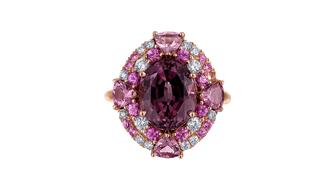Squirrel Spotting: Leadership, and Why We Might Be Getting It Wrong
Peter Smith shares thoughts on the importance of empathy, being honest, investing in employees, and avoiding groupthink.

I’ve been close enough to decisions, both made and not made, over the years and as the merry-go-around continues on its often-less-than-merry way, what is painfully obvious is that many companies don’t give nearly enough thought to the essential makeup of leadership before making important decisions.
The process of who goes in, who goes out, and who does or does not ascend to key leadership positions is a remarkably flawed process, often driven by gut instinct and perceived capabilities, rather than thorough due diligence.
Perhaps the best evidence of the culture of questionable hiring for top roles might be the scientific evidence (Dr. Helen Riess, “The Empathy Effect”) that there’s an inverse relationship between power and empathy.
In short, unless there exists a bias towards psychopathy in leadership, companies are, to a great extent, getting executive hires wrong.
So, if it is true that the prevalence of leaders possessing psychopathic tendencies is more by default than design, what should the most important attributes be when looking for a leader?
I’ll start with the aforementioned empathy. It is incomprehensible to me that a leader can inspire and engage their team if said leader doesn’t care about their people.
High leverage and low empathy is a combination that might work in the short term, but it won’t help build and sustain a committed team.
Without empathy, I cannot imagine how a leader can demonstrate the humility to accept that they do not have to have all the answers, that they can, in fact, engage with their teams to work collaboratively toward finding solutions.
The second point is that leaders need to be personally accountable for company results.
I’ve occasionally quoted the German economist Eric Gutenberg in thinking about what should be the North Star for any business.
He said, “No business has ever died from turning a profit.” It’s hard to argue Gutenberg’s sentiment. I mean, if a business is not profitable, what is the actual point?
The third point I will make is that leaders should be more impressed by the work and less so by the title itself. The greatest privilege of being a senior leader ought to be the opportunity it affords to do great work.
The higher the title, the less obstacles one ought to have in getting things done. The position should never be an end unto itself.
The next area of importance is to tell the damn truth. No organization is better for having the leader mislead or obfuscate what the goals and challenges are.
Mats Alvesson and André Spicer wrote in “The Stupidity Paradox” that, “We tend to go out of our way to ignore crucial information when the results might be disturbing or not in our best interests.”
It’s OK, even advisable, to establish stretch goals to drive a team to peak performance. And being conservative about costs and expenses is not a bad place to be.
It is not OK, however, to pretend that sales and/or cost controls will happen that are patently false, designed for short-term and self-delusional optics, while undermining organizational credibility, both internally and externally.
The next point is that a leader ought to be a storyteller.
They should set the direction for the organization and consistently articulate and underscore that message at every opportunity.
This requires transparency about what is important, and clarity about what is not important, so the latter does not unnecessarily consume resources that could be deployed to the most important projects, the biggest rocks.
When Inc. magazine asked 600 companies to estimate the percentage of their workforce who could identify their company’s top three initiatives, the executives predicted that 64 percent would be able to do so.
In reality, only 2 percent could name them. That disconnect is anathema to effective leadership.
Micromanaging might be one of the most insidious forms of leader psychopathy, and the arrogance of believing you have all the answers has a short shelf life and predictable consequences. It is galling how often leaders hire the right people for the most important positions and then tell them how to do their jobs.
A close relative of leaders believing they have all the answers is groupthink.
Research shows that insidious practice has about 75 percent of employees going along with something they don’t believe in because the culture of the organization does not welcome healthy debate or tolerate constructive dissent.
You simply cannot have necessary debate and discussion in an environment where a leader believes they are always right.
In their groundbreaking book, “Getting To Yes,” Roger Fisher and William Ury wrote: “The more seriously you disagree with someone, the more important it is that you be able to deal well with that disagreement. A good working relationship is one that can cope with differences.”
A culture that prizes fighting and uniting is more apt to illicit the best of its team collectively, and to engender the sense of psychological safety essential to learning and growth.
In his book “The Messy Middle,” Scott Belsky wrote that the job of a leader is to “challenge peace as a default. Create an environment where people can withstand and fight and engage in friction as it arises.”
Employees expect to be challenged and engaged. They want to learn and grow. If you don’t invest in their education, another employer will happily take up that role at your expense. Have a plan for your people and include them in the conversation.
Sales is a meritocracy, not a democracy. There will always be a continuum of talent—and I mean talent, not experience—and compensation, customer allocation, and prospecting opportunities ought to reflect that reality.
“Nobody expects the leader of an organization to be perfect. You are, however, expected to be authentic, warts and all.”
Believing all your salespeople should be treated equally, whether with customer allocation or compensation, is to reveal a fundamentally flawed view of sales. As in sports, your best people should take the most important shots.
Nobody expects the leader of an organization to be perfect. You are not expected to know everything, or to be immune from tough days, mistakes, or missteps. You are, however, expected to be authentic, warts and all.
Francesca Gino wrote in “Rebel Talent” that, “People can tell when we are being inauthentic. In fact, they register that inauthenticity in their bodies. When someone hides his feelings, those who interact with him experience a rise in blood pressure. The psychological response helps to explain our discomfort around people who seem fake.”
We deserve better.
The Latest

The trade show is slated for Jan. 31-Feb. 2 at The Lighthouse in New York City's Chelsea neighborhood.

January’s birthstone comes in a rainbow of colors, from the traditional red to orange, purple, and green.

The annual report highlights how it supported communities in areas where natural diamonds are mined, crafted, and sold.

How Jewelers of America’s 20 Under 40 are leading to ensure a brighter future for the jewelry industry.

Footage of a fight breaking out in the NYC Diamond District was viewed millions of times on Instagram and Facebook.


The supplier has a curated list of must-have tools for jewelers doing in-house custom work this year.

The Signet Jewelers-owned store, which turned 100 last year, calls its new concept stores “The Edit.”

Roseco’s 704-page catalog showcases new lab-grown diamonds, findings, tools & more—available in print or interactive digital editions.

Linda Coutu is rejoining the precious metals provider as its director of sales.

The governing board welcomed two new members, Claire Scragg and Susan Eisen.

Sparkle with festive diamond jewelry as we celebrate the beginning of 2026.

The master jeweler, Olympian, former senator, and Korean War veteran founded the brand Nighthorse Jewelry.

In its annual report, Pinterest noted an increase in searches for brooches, heirloom jewelry, and ‘80s luxury.

Executive Chairman Richard Baker will take over the role as rumors swirl that a bankruptcy filing is imminent for the troubled retailer.

Mohr had just retired in June after more than two decades as Couture’s retailer liaison.

Shekhar Shah of Real Gems Inc. will serve as president of the Indian Diamond & Colorstone Association in 2026.

This year’s good luck charm features the mythical horse Pegasus, and is our first Piece of the Week of the new year.

Articles about crime, engagement rings, and a necklace worn in the World Series generated the most interest among readers.

As part of the leadership transition, Sherry Smith will take on the role of vice president of coaching strategy and development.

It marks the third time the country has headed the Kimberley Process. Ghana will serve as vice chair.

The new Bulova x Stetson designs highlight two animals often associated with the American West—the bison and the Texas Longhorn.

Its residency at Yamron Jewelers will run through May 2026.

From influential executives to innovative designers, we pay tribute to the people we said goodbye to this year.

The retailer is expanding into areas with large Indian and South Asian populations.

The Italian brand has opened its first flagship amid the peaks of the Dolomites in Madonna di Campiglio, Italy.

The new curation at the Natural History Museum of Los Angeles County showcases rare gem and mineral specimens in their uncut, natural state.

The couple pleaded guilty to concealing at least $127 million in cash transactions at its precious metals businesses.





























